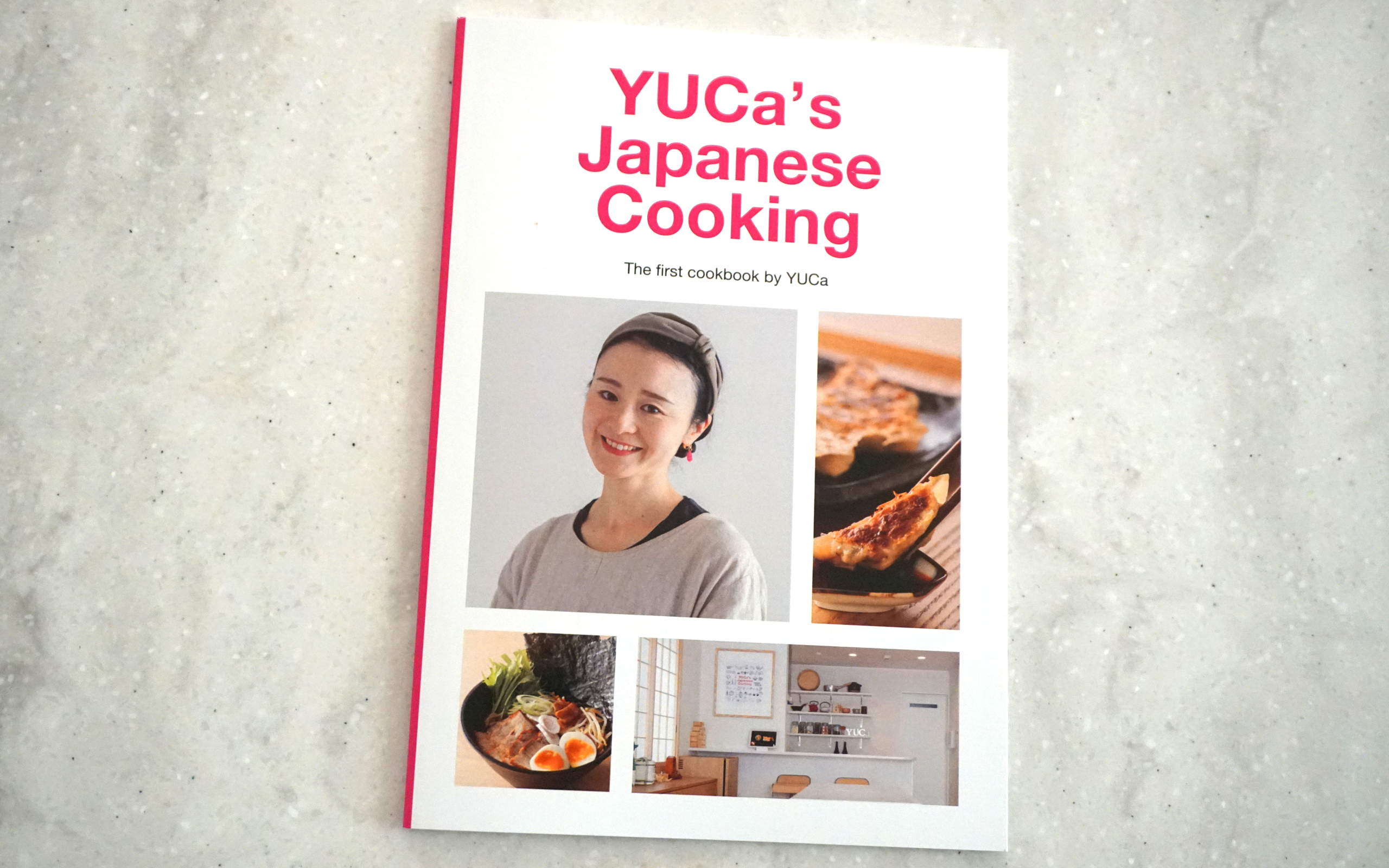Hirugao @ Ramen street in Tokyo station
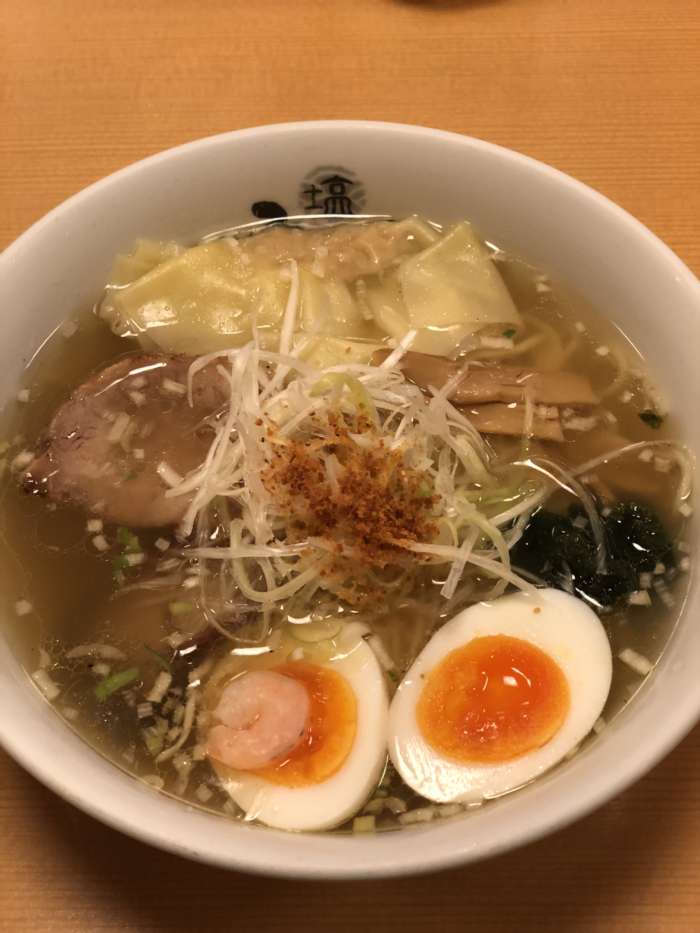
It’s hard to find tasty salt ramen shop since the salt flavor soup is so light and delicate. Also it should be well harmonized with various ingredients especially seafood. So I always feel excited to taste salt ramen everywhere. The other day, my family and I found the speciality salt ramen shop at the Ramen street in Tokyo station. Waiting outside of the shop for half an hour, we could finally enter. (Yes, you have to queue most of the time to taste famous ramen.)
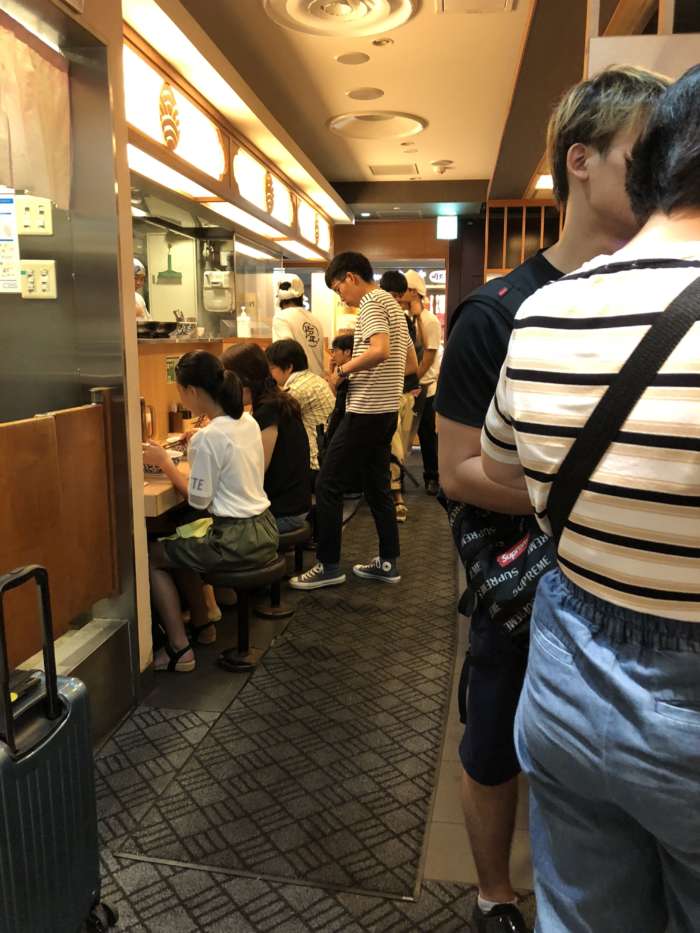
The name of the shop is Hirugao. In the shop, there was only one Japanese in the kitchen and other staffs were all people from abroad which was a bit amazing for me. I felt I was in another country even in Tokyo station. Ramen industry in Japan might be getting international!
I chose the Shrimp and salt ramen called “Ebi-shio ramen” with wonton. They use scallop and adductor muscle as for base and also dried sardine and chicken broth. So, their ramen is mixture of meat and seafood.The key ingredient, they use a salt from Vietnam. As for topping, there were seasoned egg, wonton, Japanese spring onion, pickled bamboo shoot, Roast pork and Aosa seaweed. A final touch, powdered bonito flakes on top!
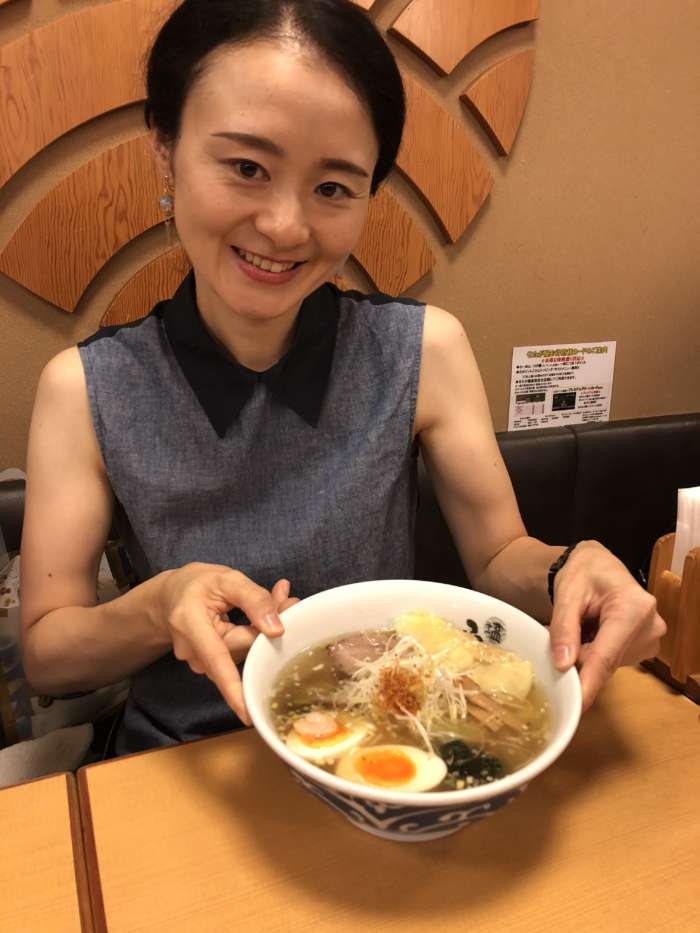
Noodle is also important for salt ramen. Their chewy thin noodle was made of flour grown in Hokkaido. 100% made in Japan. Once sipping the soup, I could taste the strong flavor of seafood. Especially, shrimp. It’s rare to see Aosa seaweed in a ramen but I liked the texture of Aosa seaweed. I DO love Aosa seaweed. I wanted to try more simple and sophisticated salt flavored ramen but I liked their ramen. I will definitely visit again!
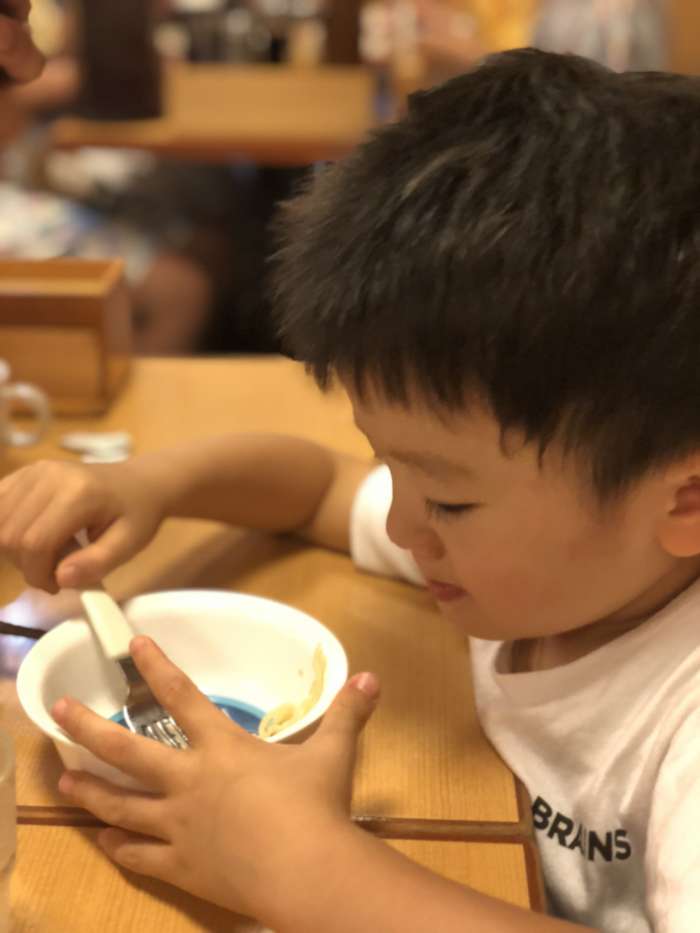
My son loved this ramen as well!









